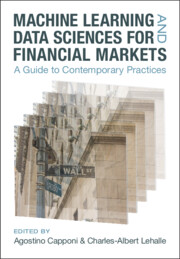
- Cited by 6
-
Cited byCrossref Citations
This Book has been cited by the following publications. This list is generated based on data provided by Crossref.
Di Persio, Luca and Garbelli, Matteo 2023. From Optimal Control to Mean Field Optimal Transport via Stochastic Neural Networks. Symmetry, Vol. 15, Issue. 9, p. 1724.
Boyarchenko, Svetlana I. and Levendorskii, Sergei Z. 2024. Alternative Models for FX: Pricing Double Barrier Options in Regime-switching Lévy Models With Memory. SSRN Electronic Journal,
Jain, Konark Firoozye, Nick Kochems, Jonathan and Treleaven, Philip 2024. Limit Order Book Simulations: A Review. SSRN Electronic Journal,
Chen, Zhanhui Lu, Yang Zhang, Jinggong and Zhu, Wenjun 2024. Managing Weather Risk with a Neural Network-Based Index Insurance. Management Science, Vol. 70, Issue. 7, p. 4306.
Akhtar, Mohammad Amir Khusru Kumar, Mohit and Nayyar, Anand 2024. Towards Ethical and Socially Responsible Explainable AI. Vol. 551, Issue. , p. 99.
Quinonez, Claudia and Meij, Edgar 2024. A new era of AI‐assisted journalism at Bloomberg. AI Magazine, Vol. 45, Issue. 2, p. 187.
- Publisher:
- Cambridge University Press
- Online publication date:
- May 2023
- Print publication year:
- 2023
- Online ISBN:
- 9781009028943
- Subjects:
- Economics, Mathematics, Mathematical Finance, Finance and Accountancy


